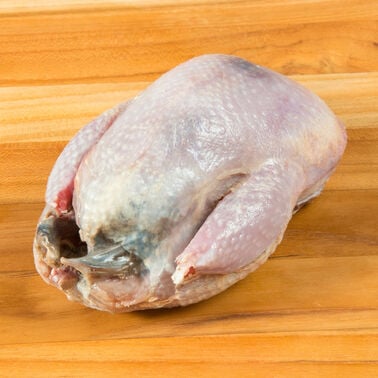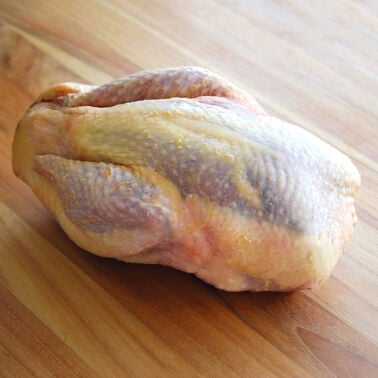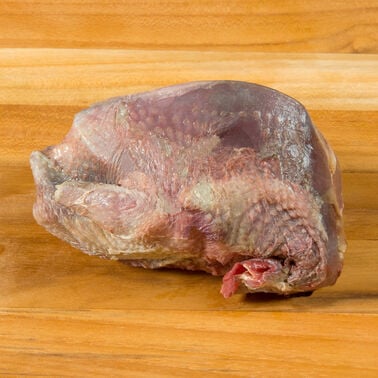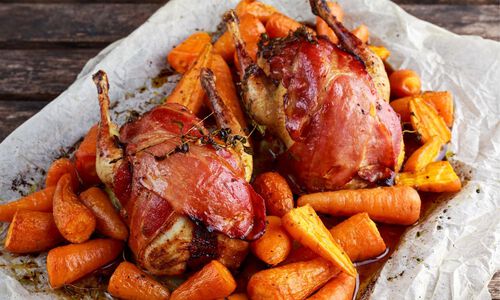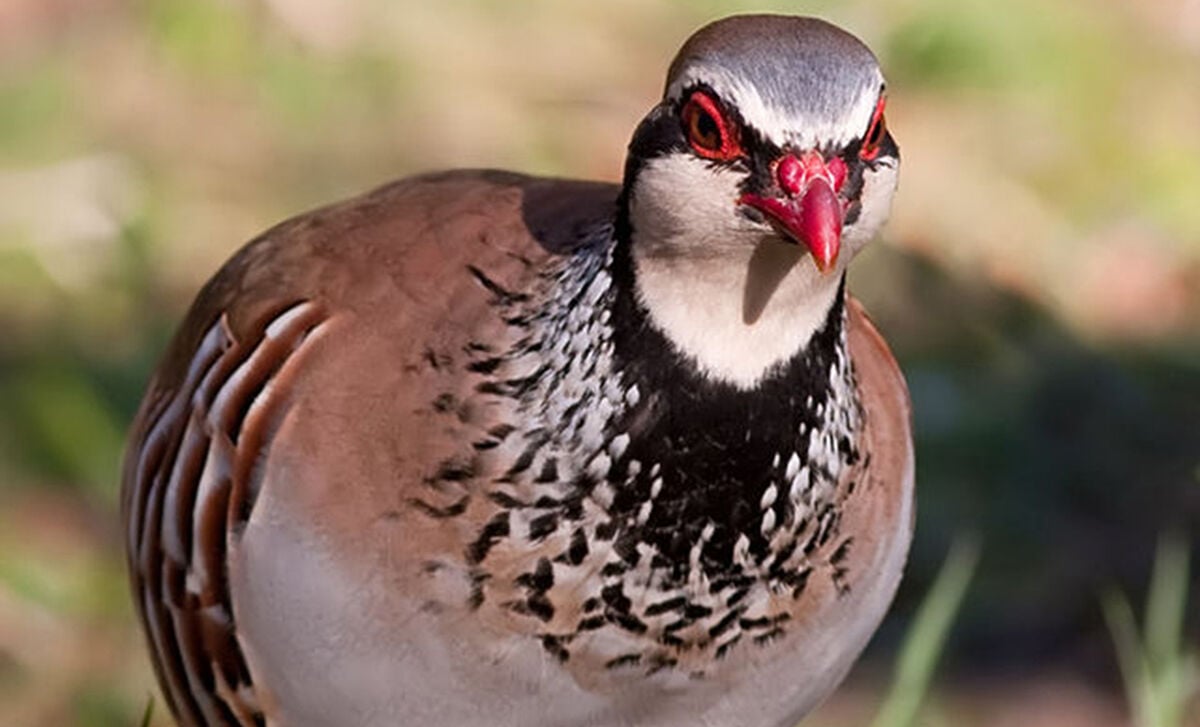
A third species of partridge, the chukar, was imported from Asia into North America for hunting sport in 1927, and has been farm-raised ever since. Unfortunately, the birds don’t take well to domestication, and the results are pale in comparison to the real thing. To confuse matters even more, what is called a partridge in the United States is often a ruffed grouse or bobwhite quail, and in the American South they are sometimes mistakenly called pheasants.
Partridges are one of the mildest-tasting game birds. They average 10 to 12 ounces dressed, or perhaps 14 ounces for a fat gray-legged bird. Chukars can weigh still more.
When hunting partridge, a perdreau—a bird of the current year—is the most prized catch. In France, a young bird that makes it past October 1, St. Remi’s Day, is said to be mature. The unmistakable sign of a young bird is the tiny white spot at the end of the long wing feather. The talent of the hunter is to recognize surroundings that could be enticing to partridges, and to find a bird that has just gotten its adult colors: earthy tints with rusty tans and, sometimes, a rusty-brown horseshoe line of feathers on the breast. Far more tender than a perdrix, or old partridge, the young bird is rarely hung. Because the meat of older game birds tends to be tough, they are traditionally hung in a cold room or in refrigeration for several days before plucking. This process ages the meat, tenderizes it, and some would say, improves the flavor.
Influential food writers and gastronomes have long debated the subject of faisander, or hanging, birds. In eighteenth century France, Grimod de la Reynière advocated that a bird shot on Ash Wednesday should hang until Easter before cooking. Jean Anthelme Brillat-Savarin more judiciously suggested that pheasants were best just as decomposition began and the aroma of the bird’s oil smelled slightly fermented.
Hanging game birds is a common European practice that never quite made it to the United States. In Eliza Leslie’s Directions for Cookery in Its Various Branches (1848), the American food writer observed that “it is not the custom in America, as in some parts of Europe, to keep game till it begins to taint; all food when inclining to decomposition being regarded by us with disgust.” Today the custom is dying out even in Parisian haute cuisine restaurants.
Cooking
Partridge is small so you will want to allow one to two per diner, depending on how you prepare the bird. It’s usually cooked for just 15 minutes, and served with a mild sauce. Often the breast is first covered with a grape leaf to protect it from drying out, and then the bird is encircled with a layer of ventrèche (pancetta) or bacon. It is roasted on top of a thick slice of country bread to trap the best part: the juice. However you can bone the meat and chop it to use in a cacciatore, or on top of wild rice and chestnuts. Older birds require slow cooking, and a strong sauce to compete with the gamy taste. Traditionally, a perdrix is slowly braised with cabbage.
